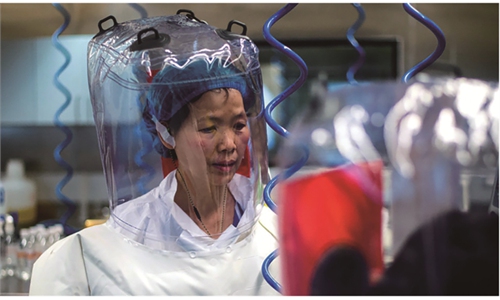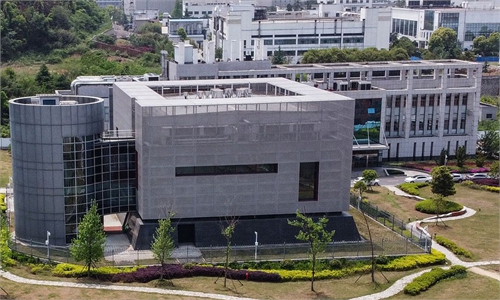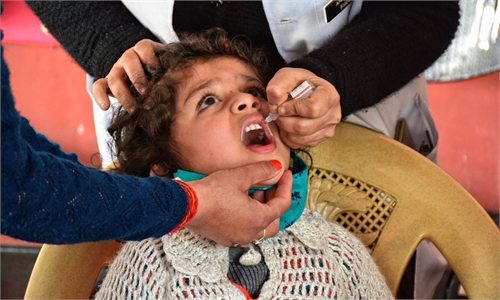Opening Wuhan virology lab to outside speaks louder than West-led allegations on a virus leakage
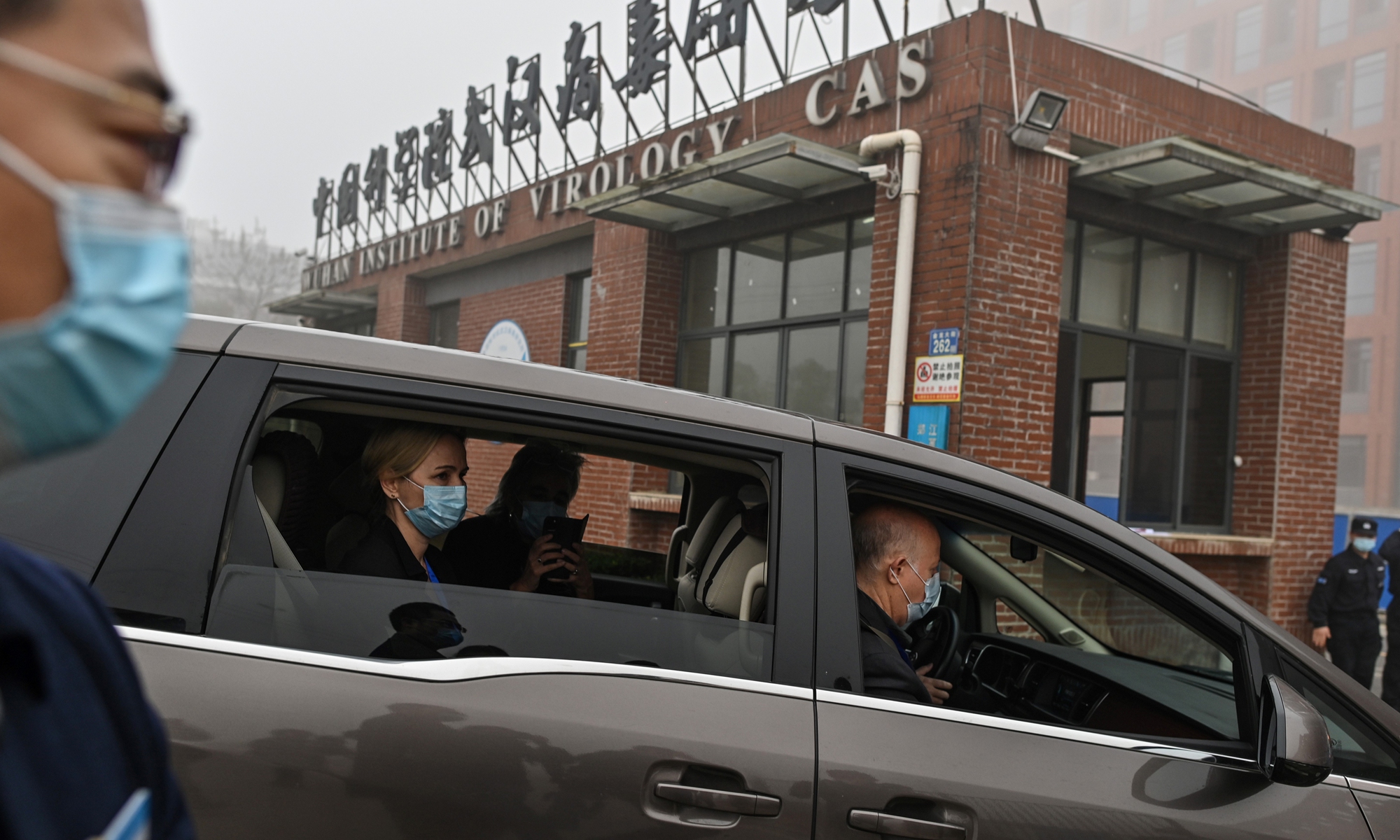
Peter Daszak (right) and other members of the World Health Organization (WHO) team investigating the origins of the COVID-19 arrive at the Wuhan Institute of Virology in Wuhan, Hubei Province on Wednesday. Photo: AFP
The WHO expert team visited on Wednesday the P4 lab inside the Wuhan Institute of Virology (WIV), a major target of a storm of Western public opinion following a massive smear campaign led by some US politicians.
The visit, which was also considered a highlight of days of intensive field studies in the city of Wuhan, spoke louder than the conspiracy theories held by some foreign politicians, analysts said.
Meanwhile, it also fully demonstrates China's open, responsible and transparent attitude on the questions of the novel coronavirus origins when countries like the US have never invited WHO experts to do similar studies on their ground, Chinese officials and experts said.
The visit came after days of intensive field work by the WHO team, which is looking into the origins of the novel coronavirus. Their visits included two hospitals where early cases in China were reported, a seafood market that was closely linked to the first batch of patients infected with the novel coronavirus in China, and the provincial and municipal centers for disease control and prevention, as well as an animal health facility.
Peter Ben Embarek, the scientist leading the WHO team, confirmed with the Global Times that the experts visited the Wuhan Institute of Virology and the P4 lab in the institute on Wednesday.
Wang Wenbin, spokesperson of the Chinese Foreign Ministry, told a routine press conference on Wednesday that the WHO team visited the institute and held discussions with experts from Huazhong Agriculture University.
Ben Embarek told the Global Times in an earlier interview that the team would meet Shi Zhengli at the Wuhan virology lab, a leading Chinese virologist from the lab who has been dubbed "Bat Woman" due to her years of research into bats and viruses and her achievements in this field.
Peter Daszak, a British zoologist and member of the WHO team, shared in a Tweet on Wednesday afternoon that the WHO experts had an "extremely important meeting today with staff at WIV including Dr Shi Zhengli. Frank, open discussion. Key questions asked & answered."
A highlight amid Western critics
The lab's fully transparent operations and its researches have been a strong demonstration to refute conspiracy theories and unproven allegations about its links to COVID-19 epidemic.
Founded in 1956, the WIV is home to China's first high-level biosafety laboratory for studying class-four pathogens, which, like similar biosafety labs around the world, follows strict inspections and international standards. It was also one of the designated agencies of China's National Health Commission to submit the genome sequence of the novel coronavirus to the WHO on January 12, 2020.
A source close to the lab told the Global Times on Wednesday that "everything went well with the [WHO] visit." Daszak also told Sky News that the team was seeing new information, which was good and valuable and it "is beginning to help us look at the right directions for this virus," according to a story published by the British broadcaster on Wednesday.
Being open and transparent to the field studies of the international team fully demonstrates China's attitude amid growing conspiracy theories and smear campaigns against the country in the wake of the COVID-19 outbreaks, in addition to doubts about whether China was timely in sharing information with the international community without hiding anything.
However, the lab has been ruthlessly smeared by some anti-China Western politicians, such as former US secretary of state Mike Pompeo, as part of their long-term strategy to incite a Cold War-like confrontation with China, with no respect being given to science and facts. Those allegations appeared "ridiculous" to those who work at the lab, and are not even worth refuting, sources close to the matter told the Global Times.
For instance, one unfounded allegation cited by US agencies was a report by the London-based NBC News Verification Unit in May 2020 which claimed there was no cellphone activity in a high-security section of the Wuhan Institute of Virology from October 7 through October 24, 2019, and that there may have been a "hazardous event" sometime between October 6 and October 11. Such reports were also part of a choreographed campaign supporting the "Wuhan lab virus leakage theory" hyped by Western politicians.
A source close to the lab, who spoke on condition of anonymity, denounced such conspiracy theories, clarifying that the lab has never experienced a so-called hazardous event and it has never stopped operating since it was opened.
"The US government has never provided one piece of verifiable evidence to support this hype about the coronavirus being leaked from the lab. Some politicians made such claims only to shift responsibility and divert public attention from their own failure in handling COVID-19," he said.
"Without authorization, no unqualified person can enter the laboratory, and no scientific researcher can take a piece of paper or a drop of water out of the laboratory. In an exaggerated way, even a mosquito can't get in without approval," the source said.
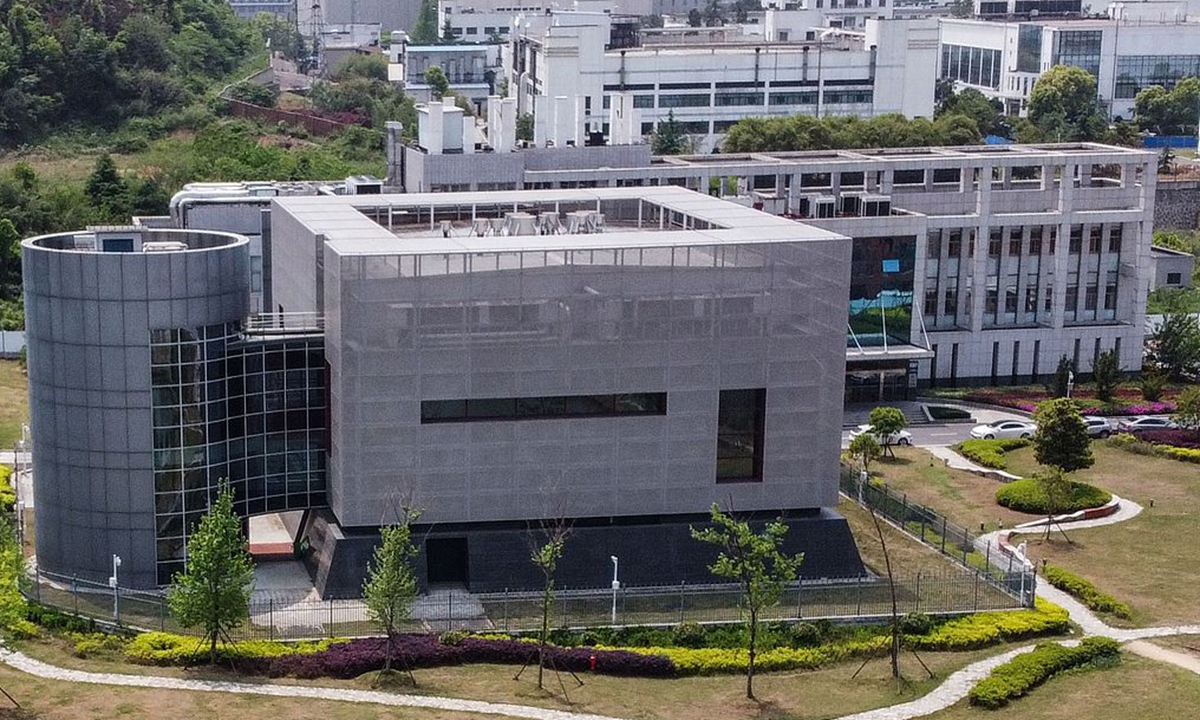
Wuhan Institute of Virology file photo:VCG
Valuable information
Some experts have been studying whether the bats could be one of the natural hosts of the novel coronavirus, as the original intermediate hosts have not been identified yet, which made the meeting among Shi, other WIV staff, experts from Huazhong Agriculture University and the WHO team of 13 experts much more meaningful, especially when Shi and Daszak have been working closely on this subject for years.
Daszak, who is also the head of New York-based EcoHealth Alliance, has been working with Shi for over 15 years. And he was also caught in the crosshairs following the politicization of the issue and the hyping of the conspiracy theories.
Over the past few years, Shi has been working on gene sequence analysis of the coronaviruses carried by bats. Perhaps because of this, there have been claims that a bat-carried virus strain she found in 2013 in a cave in Yunnan - RaTG13 - is believed to be the novel coronavirus SARS-CoV-2, which is also seen as "evidence" of the laboratory leakage theory.
However, the novel coronavirus SARS-CoV-2 differs significantly from RaTG13, as the latter does not infect human cells, the source said.
Since the SARS outbreak in 2002, Shi's team has conducted more than 10 years of research into the source of SARS and coronaviruses from bats, understood the basic characteristics of coronaviruses, established detection techniques and stored related reagents and drugs.
Because of this builtup experience, the lab has completed source detection, sequence analysis and virus isolation within a week of obtaining samples after COVID-19 cases were initially reported in Wuhan.
It is the work of Shi and other scientists that provided the conditions for our fight against the epidemic, especially for early diagnosis and drug screening, and laid the foundation for the study of rapid test reagents and vaccine development, the source told the Global Times.
"As the WHO said at yesterday's press conference, the WHO team has had fruitful discussions with their Chinese counterparts," Wang of the Chinese Foreign Ministry said, noting that those activities are an important part of the work of tracing the origins of the virus. While work on the origins is a complicated scientific question, we need to provide sufficient room for them to carry on scientific research, he emphasized.
Wang added that given some evidence, reports and research papers suggested that the virus and epidemic may have occurred in multiple places around the world in the second half of 2019, so the WHO also needs to conduct similar field studies to trace the origins of the virus on the basis of facts and responsibilities in other countries and regions.


